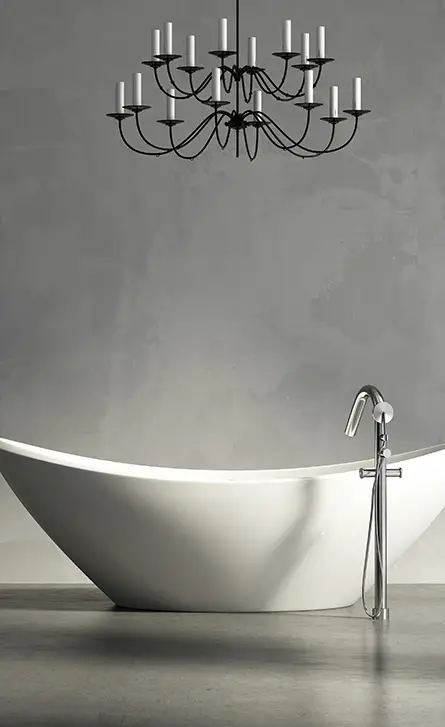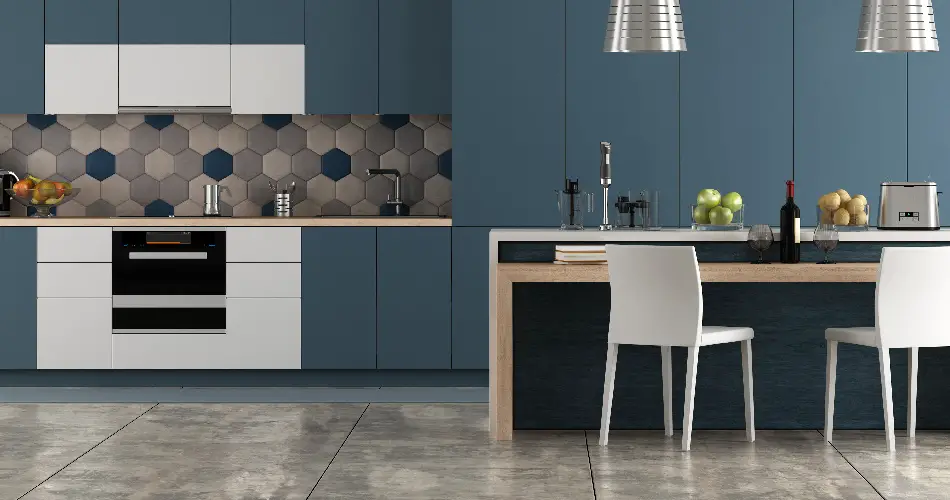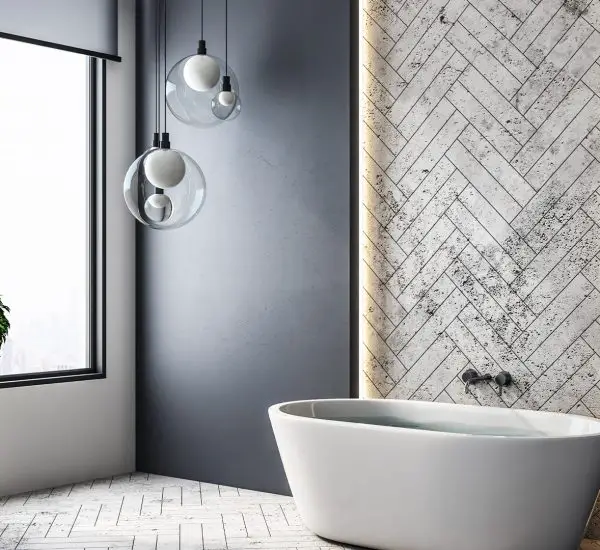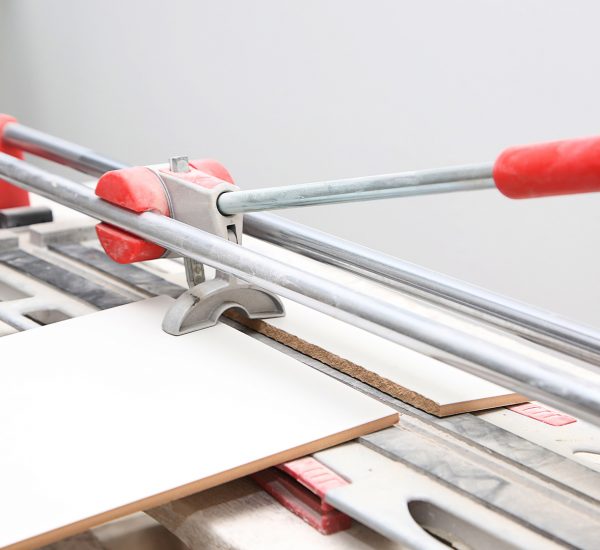When starting a tiling project you will be looking for the right size, style, colour and finish of tiles. But have you thought about which type of tile you should be using for your project?
Well, there is often confusion around the differences between ceramic and porcelain tiles. Most people believe they are the same and it does not matter which you choose. However, it is vital that you choose the correct material before starting your project to save you time and money in the future.
Both ceramic and porcelain tiles have many similarities but a few small areas these tiles do vary and can have a significant impact if the wrong tile is chosen.
The Difference Between Porcelain and Ceramic Tiles

CONSTRUCTION
The construction of both porcelain and ceramic tiles does vary. Ceramic tiles are constructed with red, brown or white clay and are softer and less dense than their porcelain counterparts.
Porcelain tiles are made from white clay, sand and feldspar which makes them harder and denser than ceramic tiles.
COST
Porcelain tiles are known for consisting considerably more than ceramic tiles. This is because of the great number of ingredients within the tile and the manufacturing process. Ceramic tiles are cheaper than ceramics as they are made from one single material and have a much simpler manufacturing process.
COLOUR
Many tiles come in a variety of colours. Ceramic tiles get their colour from a glaze which is applied on top of the tile. Whereas porcelain can be coloured to match the surface of the tile, this is known as a full-bodied tile. Porcelain tiles can also be covered with a coloured glaze.
EASE OF INSTALL
Porcelain and ceramic tiles can look stunning when they are laid correctly. However, porcelain tiles are harder to cut and may require specialist tile cutters, unlike ceramic tiles which can easily be cut using a standard tile cutter. Porcelain tiles can be installed with water and electric underfloor heating systems, whereas ceramic tiles can only be used with electric systems as the tiles are more fragile and can crack when water-based systems expand.
MOISTURE
Many customers may be looking for tiles to use in a bathroom, wet room or outdoors. Ceramic tiles absorb more water and are more prone to cracking in cold temperatures, so it is advised that ceramic tiles are not used outdoors and when used in a bathroom or wetroom they should be sealed using a tile sealer to protect them.
Porcelain tiles can be used both indoors and outdoors where they will be in contact with moisture, as the tiles are denser and do not absorb moisture like ceramic tiles.
CLEANING
Once you have completed your tiling project you will want to be able to clean your tiles easily. Before starting your project is good to know that ceramic tiles, especially un-sealed and un-glazed tiles can easily stain and cannot be cleaned using strong cleaners as they may damage the tiles. Porcelain tiles, however, do not stain easily and can be cleaned with strong cleaners.
USAGE
When deciding which tiles you will use for your project, it is good to think about the type of area that you are using the tiles in. If the area that you are tiling will have high footfall or abrasion you will want to choose porcelain tiles over ceramics as they withstand wear much more than their ceramic counterparts.
PEI Rating
When choosing tiles you should look at the PEI rating, if the supplier shows this information. The PEI rating (Porcelain Enamel Institute Rating).
- PEI 0 – No foot traffic, this rating is most commonly found on wall only tiles, like metro tiles.
- PEI 1 – Very light traffic areas, this rating is typically found on tiles suited to bathrooms.
- PEI 2 – Light traffic, found on tiles for use within bathrooms.
- PEI 3 – Light to moderate traffic, this rating is normally found on tiles that are suited for general domestic use.
- PEI 4 – Moderate to heavy traffic, fine for more domestic floors and some commercial projects.
- PEI 5 – Heavy traffic areas. Suitable for areas with high footfall and for commercial projects.
Most porcelain tiles, which are harder than ceramic tiles, have PEI ratings between three and five. While ceramic tiles will have a rating between three and four.
When planning you tiling project it is key to selecting the right tiles for your application as well as choosing the right style, colour and finish. Ensuring you select the right kind of tile for your project will ensure that it lasts longer and requires minimum maintenance.




